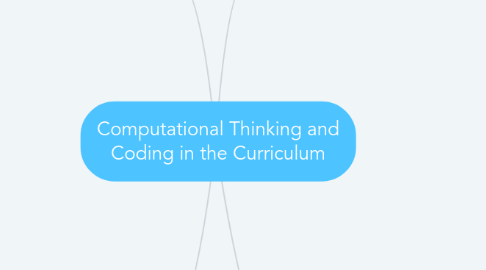
1. Australian Curriculum
1.1. Computational thinking: A problem-solving method that involves various techniques and strategies that can be implemented by digital systems. Techniques and strategies may include organising data logically, breaking down problems into parts, defining abstract concepts and designing and using algorithms, patterns and models.
1.2. F-2
1.2.1. Follow, describe and represent a sequence of steps and decisions (algorithms) needed to solve simple problems (ACTDIP004)
1.3. 3-4
1.3.1. Define simple problems, and describe and follow a sequence of steps and decisions (algorithms) needed to solve them (ACTDIP010)
1.3.2. Implement simple digital solutions as visual programs with algorithms involving branching (decisions) and user input (ACTDIP011)
1.4. 5-6
1.4.1. Design a user interface for a digital system (ACTDIP018)
1.4.2. Design, modify and follow simple algorithms involving sequences of steps, branching, and iteration (repetition) (ACTDIP019)
1.4.3. Implement digital solutions as simple visual programs involving branching, iteration (repetition), and user input (ACTDIP020)
2. More resources:
2.1. Blockly (self-paced games to introduce coding concepts)
2.2. Cargo-Bot (webpage that uses Codea for making own games)
2.3. Hopscotch (iOS app for creating own apps)
2.4. Tickle (free app for programing robots and drones - e.g. Dot & Dash)
2.5. Code Monster (interactive JavaScript editor)
3. Computational thinking: looking at a problem in a way that a computer can help us to solve it in the most efficient way possible.
3.1. 1. think about the steps needed
3.2. 2. use technical skills to get the computer working on the problem
3.3. Approaches
3.3.1. Tinkering
3.3.2. Perservering
3.3.3. Collaborating
3.3.4. Debugging
3.3.5. Creating
3.4. Concepts
3.4.1. Patterns
3.4.2. Decomposition
3.4.3. Algorithims
3.4.4. Logic
3.4.5. Abstraction
3.4.6. Evaluation
4. Scratch: a programming environment that enables young people to create their own interactive stories, games, and simulations, and then share those creations in an online community
4.1. 1. computational concepts
4.1.1. sequence
4.1.2. loops
4.1.3. parallelism
4.1.4. events
4.1.5. conditionals
4.1.6. operators
4.1.7. data
4.2. 2. computational practices
4.2.1. experimenting and iterating
4.2.2. testing and debugging
4.2.3. reusing and remixing
4.2.4. abstracting and modularizing:
4.3. 3. computational perspectives
4.3.1. expressing: computation is a medium of creation
4.3.2. connecting to others
4.3.3. questioning

